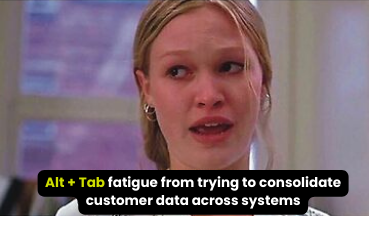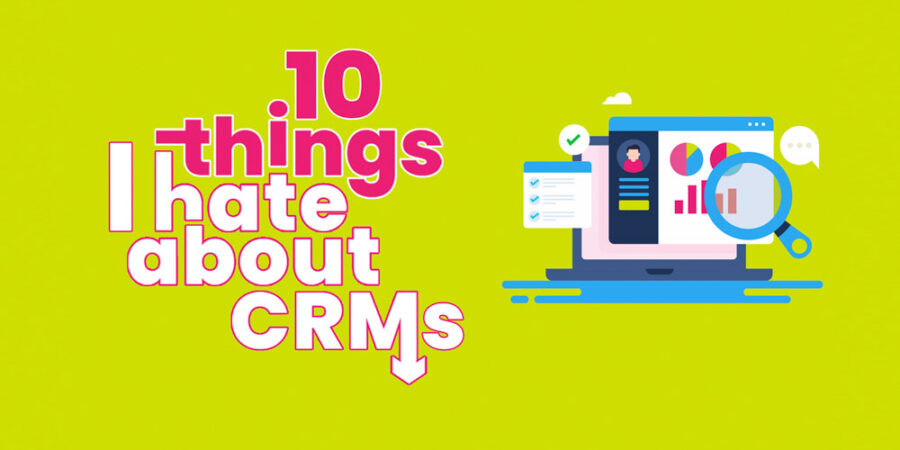We’ve all been there – another frustrating day wrestling with a CRM that seems designed to test your patience rather than help your bank succeed. After analyzing thousands of customer reviews and speaking directly with financial institutions, we’ve uncovered the ten reasons banking professionals are breaking up with their traditional CRMs. More importantly, we’ll show you why BusinessNext is sparking joy in banking technology again and establishing itself as a leader in the space.

1. The Complexity Burden
When banking professionals describe their CRM experiences, “overwhelming complexity” consistently tops the list of complaints. One regional bank executive captured this sentiment perfectly: “We spent more time teaching our staff how to use the CRM than they spent actually using it.” This complexity isn’t just frustrating – it actively prevents institutions from serving their customers effectively.
BusinessNext takes a radically different approach. Instead of forcing banking professionals to adapt to a generic system, we built our platform around how banks and credit unions actually work. Every role sees exactly what they need: tellers access service-focused views, lenders see loan-specific information, and managers get performance metrics that matter to them. The result? Our clients regularly achieve adoption rates above 90%, with Magnifi Financial reporting 93% of employees actively using the platform for more than six hours daily.

2. Money Matters: The True Cost of Banking CRMs
When banking executives discuss their CRM frustrations, cost consistently emerges as a critical pain point – and not just the sticker price. One credit union executive recently shared that their actual CRM expenses quadrupled their initial budget once all the hidden costs emerged.
Traditional CRMs create a complex web of expenses:
- Customization fees for basic banking functions
- Integration charges for core banking systems
- Per-user pricing that punishes growth
- The ongoing cost of maintaining multiple systems
The result?
Institutions find themselves paying premium prices just to make standard banking workflows function properly.
BusinessNext takes a fundamentally different approach. Banking functionality isn’t an expensive add-on – it’s built into our core platform. Our 3-4 month implementation timeline (versus the industry standard 12-18 months) significantly reduces both direct costs and opportunity costs. This approach removes implementation risk, while our unified platform eliminates the need for multiple point solutions and their associated maintenance costs.
3. The Integration Nightmare
“It feels like we’re running two separate businesses – one in our core banking system and one in our CRM.”
This comment from a credit union COO reflects a common theme in CRM reviews: the painful disconnect between critical banking systems. Traditional CRMs require months of costly customization to achieve even basic integration with core banking platforms.
BusinessNext was built from the ground up to speak your core banking system’s language. Our real-time integration suite connects seamlessly with your existing tools – core banking systems, card systems, loan origination software, and more. No more toggling between systems, no more manual data entry, no more reconciliation headaches.
4. The Custom Development Trap
Review after review mentions the endless cycle of custom development needed to make generic CRMs work for banking operations. What should be simple workflows require expensive consultants and lengthy development cycles. One bank reported spending over $2 million trying to customize their CRM for basic banking processes.
As Forrester noted, “44% of CRM deployments struggle with poor user adoption as workflows and experiences must be customized to add value to each front-office worker. Industry CRM provides experiences that have been battle-tested for a particular vertical.”
We took a different path. BusinessNext includes over 80% of standard banking operations pre-built into the platform. Need to customize something for your unique needs? Our no-code design tools put that power in your hands, no developers required.

5. The Data Fragmentation Problem

Fragmented customer data isn’t just an inconvenience – it’s a competitive disadvantage. Traditional CRMs create new data silos instead of solving them, leaving financial institutions with an incomplete view of their customers.
BusinessNext’s Customer 360 feature unifies every customer interaction across all channels and touchpoints. From branch visits to digital engagement, from transaction history to service requests, everything comes together in a single, real-time view. This comprehensive understanding enables truly personalized service and proactive relationship management.
6. The Automation Gap
“Our team spends more time managing the CRM than managing customer relationships.”
This frustrated comment from a bank VP highlights how traditional CRMs often create more manual work instead of reducing it. While these systems promise automation, they typically deliver only basic capabilities that don’t align with banking workflows.
BusinessNext approaches automation through a banking-first lens. Our platform includes sophisticated campaign management, intelligent lead scoring that understands banking products, and AI-driven next-best-action recommendations. More importantly, we automate the banking-specific processes that matter: customer onboarding, loan application workflows, service request routing, and compliance documentation. This means your team can focus on building relationships instead of managing systems.
7. The Support Struggle
Financial institutions consistently report frustration with generic CRM providers’ support teams who don’t understand banking operations or compliance requirements. When issues arise, they face long wait times and support staff who can’t grasp the urgency of banking-specific challenges.
At BusinessNext, we handle all implementations directly rather than outsourcing to third parties. Our support team consists of banking technology experts with previous bank and credit union experience, who understand your industry’s unique challenges and regulatory requirements. When you need help, you’re talking to someone who speaks your language and understands your priorities.
8. The Scalability Challenge
As financial institutions grow, many find their CRM systems becoming a bottleneck. Performance degrades, storage limits are reached, and system modifications become increasingly complex. One regional bank described their experience as “death by a thousand customizations” as they tried to scale their generic CRM.
Confirmed by Forrester, banking institutions face unique regulatory compliance challenges that standard CRM systems struggle to address. The report highlights that industry-specific CRM solutions are essential for financial institutions, as they provide specialized workflows, data models, AI capabilities, and user experiences tailored to banking requirements. These purpose-built systems also offer crucial integrations with core banking platforms and support industry-specific app ecosystems, making them significantly more effective than generic alternatives. (Forrester Customer Relationship Management Software Landscape, Q4 2024).
BusinessNext’s architecture is built for enterprise-scale banking operations. We power four out of five of the largest banking CRM implementations globally. Our platform handles growing transaction volumes and expanding user bases without performance degradation. As your institution grows – whether through adding branches, expanding services, or mergers – your core workflows and integrations remain stable and efficient.
9. The Feature Overload

“It feels like we’re paying for a thousand features but can only use fifty.”
This common complaint reflects how generic CRMs try to be everything to everyone, resulting in cluttered interfaces and unused functionality that still needs to be paid for and maintained.
BusinessNext takes a precision approach. Every feature is designed specifically for banking operations. Instead of overwhelming users with irrelevant tools, we deliver focused functionality that matches how different banking roles work. The result is a clean, intuitive interface that helps your team work more efficiently.
10. The User Interface Issue
Banking professionals consistently report that traditional CRMs feel dated and difficult to navigate. The interfaces often seem designed for tech companies rather than financial institutions, making simple tasks unnecessarily complicated.
BusinessNext’s interface is built around banking workflows. We organize information and tools the way banking professionals think about their work. Critical information is immediately accessible, alerts are contextual and actionable, and navigation follows natural banking processes.
Beyond CRM: A Unified Banking Platform
These ten pain points reveal a fundamental truth: traditional CRMs weren’t built for banking. Trying to adapt them to financial institutions’ needs creates complexity, increases costs, and frustrates employees. BusinessNext takes a different approach. We’re not just a CRM – we’re a unified data platform built specifically for banks and credit unions.
This distinction matters.
Instead of trying to force banking operations into a generic CRM framework, we built a platform that naturally aligns with how financial institutions work. Real-time core banking integration isn’t an add-on – it’s fundamental to our architecture. Banking workflows aren’t custom development projects – they’re built into our DNA. Employee adoption isn’t a challenge to overcome – it’s the natural result of giving people tools that actually help them work better.
The results speak for themselves. Our clients report:
90%+ employee adoption rates
3-4 month implementation timelines instead of 12-18 months
Better compliance documentation and risk management

Significant reductions in manual data entry and system switching
Improved customer satisfaction and relationship growth

Join our weekly Tuesday demo sessions to discover why leading financial institutions are choosing BusinessNext to power their customer relationships and operational excellence.

Leave a Reply
Your email is safe with us.